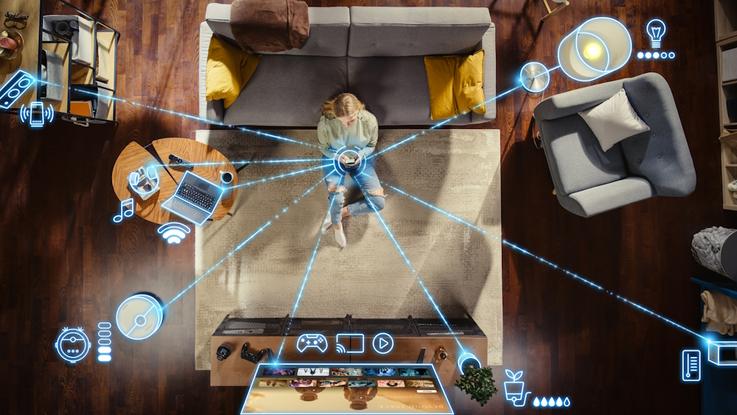05. Mar 2025
KNX and smart device manufacturers: The need for open standards in smart homes

Homeowners have never had so much choice in smart devices. It’s quite the luxury, but it also comes with a new challenge, as smart devices from different brands often won't be able to work together. This can result in a scattered smart home with a lot of extra commands, rather than a smooth and convenient experience. The solution? Integrating your devices with a smart home open standard system, like KNX. The open standard will function as a translator, allowing different types of devices from various brands to communicate seamlessly with each other.
Open smart home standards in short
What is an open smart home standard?

A smart home open standard is a set of universally accepted protocols that allow different devices and systems to communicate seamlessly, regardless of manufacturer or device type. In that sense, it can be compared to a universal language for smart devices. Imagine if every person spoke a different language with no common understanding—communication would be impossible. Similarly, without an open standard, smart home devices from different brands wouldn't be able to work together. KNX acts like a shared language, allowing devices—whether from Brand A, B, or C, or separate device types like smart lighting, security systems and HVAC controls—to communicate seamlessly. This ensures homeowners can mix and match devices without worrying about compatibility issues.
Advantages of an open standard for homeowners
An open standard like KNX brings several key benefits to smart homeowners:
Device interoperability: Whether it's a smart thermostat, lighting control, or security system, KNX ensures all devices communicate on the same platform.
Scalability and flexibility: Homeowners can expand their smart home setup over time, integrating new devices without system restrictions.
Energy efficiency and cost savings: Many KNX-compatible products focus on intelligent energy management, helping reduce power consumption and lower utility bills.
Security and reliability: Unlike cloud-dependent systems, KNX runs on decentralized architecture, making it more secure against cyber
More on the advantages of an open standard like KNX in our Newsroom article ‘4 reasons your smart devices will be compatible with KNX’.
The role of manufacturers in the KNX ecosystem
The role of manufacturers in the KNX ecosystem

KNX does not produce smart home devices itself; instead, we collaborate with over 500 manufacturers worldwide, including industry leaders in lighting, HVAC, security, and energy management. These KNX Members develop certified products that integrate seamlessly into KNX installations. This partnership ensures that:
Homeowners can mix and match devices from different brands without worrying about compatibility issues.
Innovation thrives as manufacturers bring new smart technologies into the KNX ecosystem.
Future-proofing is guaranteed, as the open standard supports new developments in IoT, AI-driven automation, and energy efficiency
This way, KNX is able to continue to expand on their unparalleled expertise in home automation connectivity, and trust in their partnerships with manufacturers to create smart home devices that match the KNX system and our innovative philosophy.
Are devices by other manufacturers also compatible with the KNX system?
Non-member manufacturers can still develop products that work with KNX, but these devices are not officially certified and might require additional configurations or gateways. Many third-party manufacturers offer devices that can integrate with KNX through protocol converters or software interfaces. Some voice assistants, smart hubs, and IoT platforms (like Google Home, Alexa, or Home Assistant) can interact with KNX via specialized interfaces.
An open standard truly offers greater flexibility for homeowners to design a smart home according to their own taste and preferences. If you’re interested in connecting your KNX system with popular smart home assistants, be sure to read our help-articles:
How will the open standard in the KNX system develop?
With its commitment to an open standard as well as emerging smart home trends, such as AI-powered automation and connectivity with Internet of Things (IoT). Wireless and hybrid solutions like KNX RF for greater installation flexibility, KNX is shaping the future of smart home automation. As more manufacturers join the KNX ecosystem, homeowners will continue to enjoy a broader selection of compatible devices, improved automation capabilities, and a truly future-proof smart home solution.
Highlights
-
 News
NewsSave 30% on an ETS6 license in May
For a limited time, we’re offering 30% discount on all cloud versions of ETS6 licenses. Don’t miss this exclusive deal this ... -
 News
NewsThe KNX Journal 2025 is now available
The latest edition of our annual smart home and building solutions magazine has arrived. The KNX Journal 2025 offers ... -

